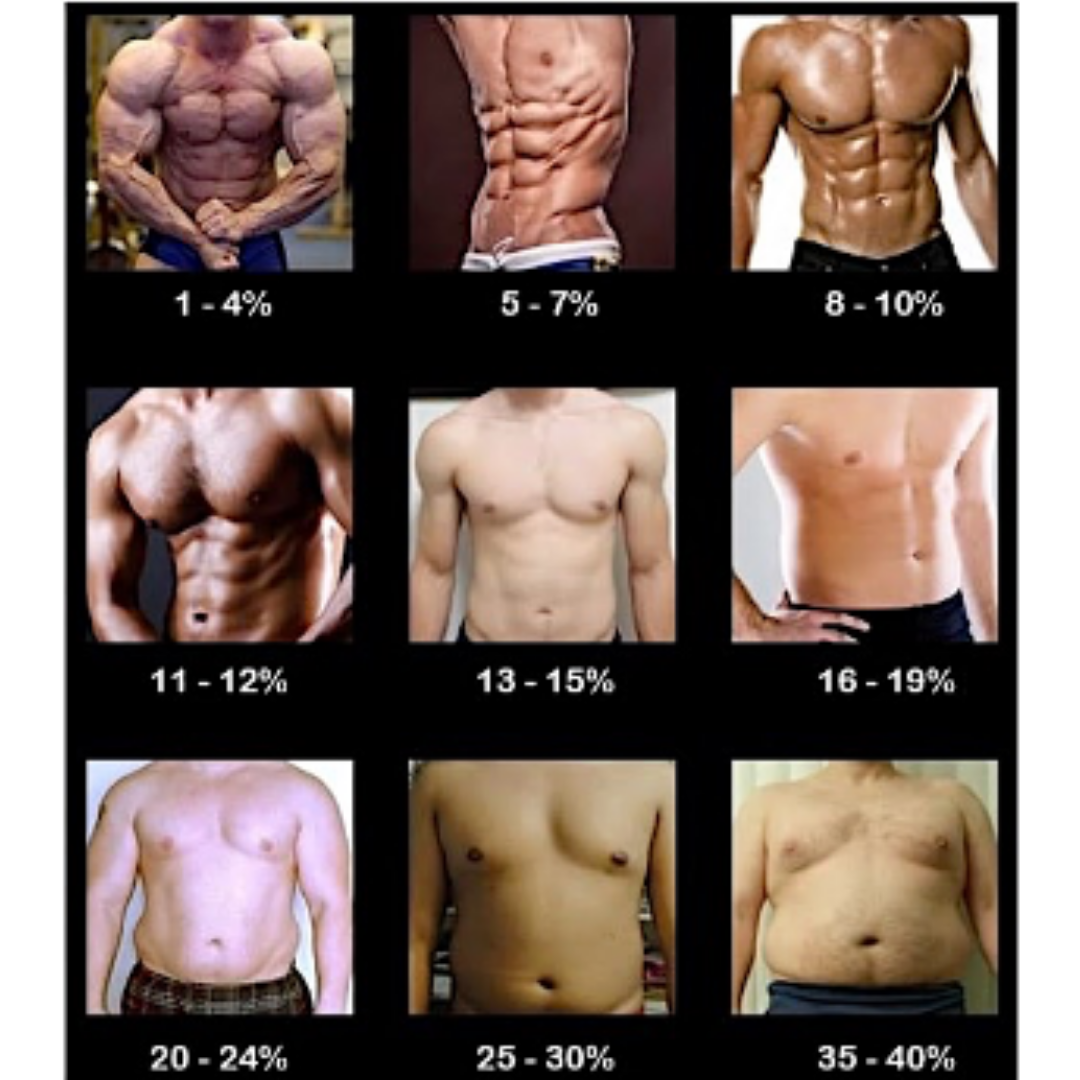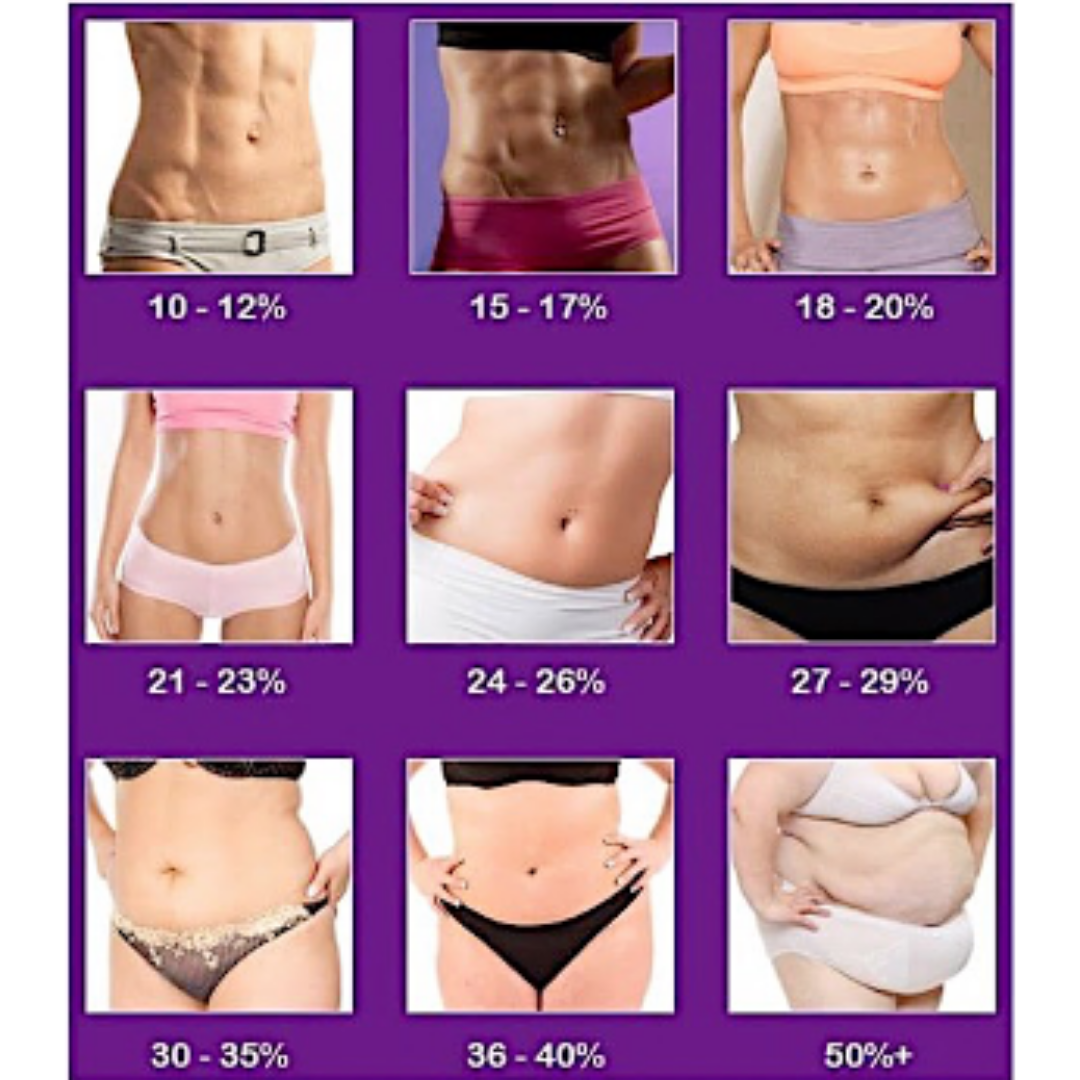Calorie Calculator
Please use the calculator on your computer.
BFP Example Charts
Notes
Fat Loss
When determining your Weekly Fat-Loss Goal, the higher your BFP and the more fat you have to lose, the higher your goal can be. The lower your BFP and the less fat you have to lose, the lower it should be.
For example, if you’re a man with 15% body fat, then your Ideal Weekly Fat-Loss Goal is 1 pound. If you have 30%, then your goal is 1.5 pounds. If you’re a female with only 15% body fat, then your Ideal Weekly Fat-Loss Goal is 0.5 pounds. If you have 30%, then your goal is 1.
Women naturally have more body fat than men because they have to give birth; thus, they’ll look leaner at a higher percent.
When setting your macros, determine your protein percentage based on your BFP. The lower your BFP, the higher your protein percentage should be. The higher your BFP, the lower your protein percentage can be.
For example, if you’re a male with only 10% body fat and your goal is fat loss, your protein percentage should be 40%. However, if your BFP is 30%, then 30-35% is good. The same thing applies to women. If you’re a female with 20% body fat and your goal is fat loss, your protein percentage should be 40%. However, if your BFP is 40%, then 30-35% is good.
You may base your carb and fat percentages on personal eating preferences after your protein percentage has been set.
Muscle Gain
When determining your Weekly Muscle-Gain Goal, to build muscle with minimal fat gain, choose a lower number (0.5-1). To build as much muscle as possible without caring about fat gain, choose a higher number (1.5-2).
When setting your macros, you may base all of your percentages on personal eating preferences. This also applies if your Physique Goal is Maintenance.
Continued Education
If you’d like to learn more about counting calories and everything flexible dieting, check out Coach Bobby’s book, The Winner’s Manual, or apply for coaching!





